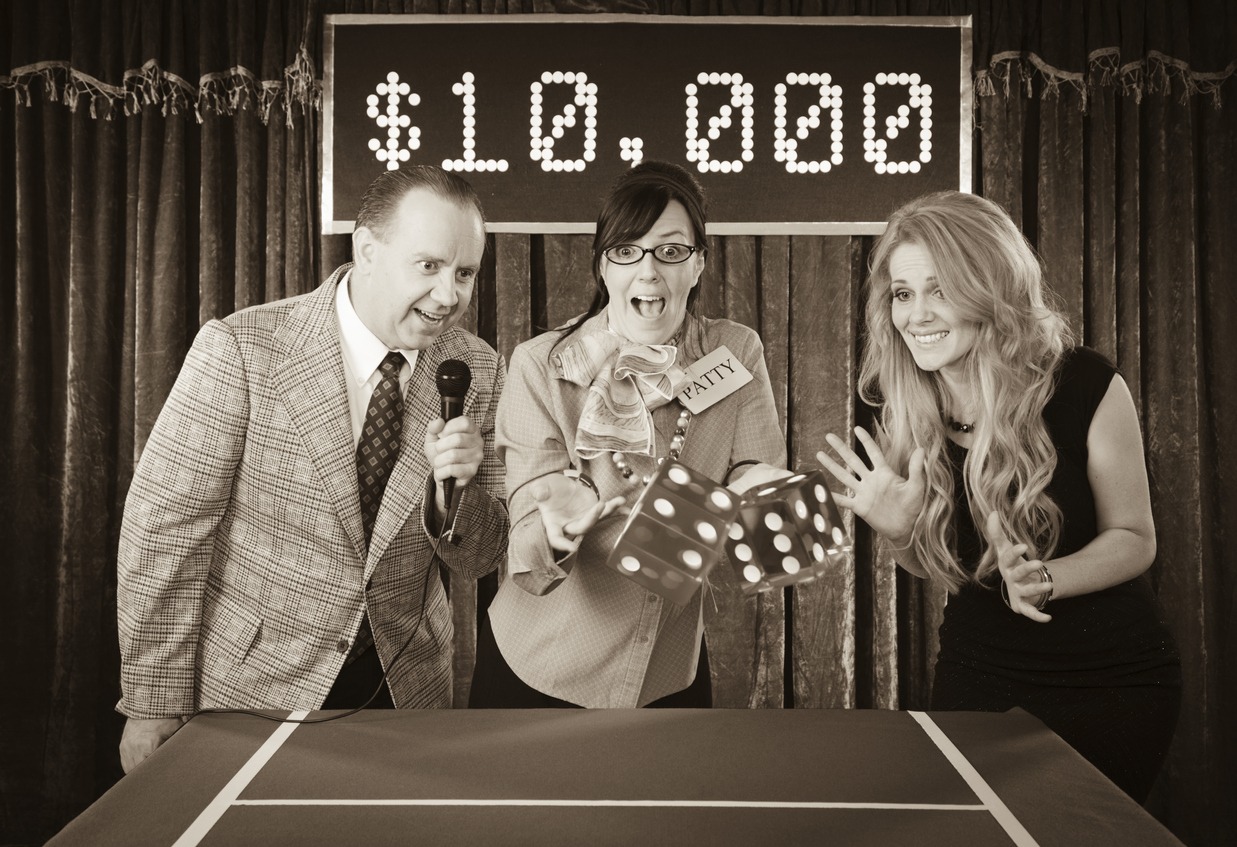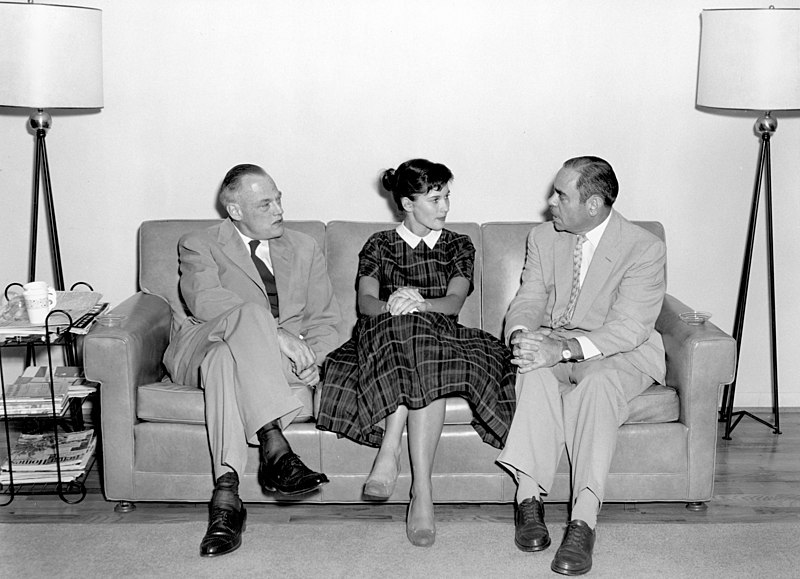The 1950s marked a golden era for television, introducing a format that would captivate audiences for decades to come: the game show. During this post-war period, families across America gathered around their TV sets, eager to engage with this new form of entertainment. Game shows not only provided light-hearted fun but also reflected the optimism and burgeoning consumer culture of the time, making them a staple of 1950s television.
In this article, we’ll take a nostalgic journey back to the must-watch game shows of the 1950s. From the suspenseful guessing games of “What’s My Line?” to the thrilling challenges of “Beat the Clock,” we’ll explore the shows that defined a decade and set the foundation for all game shows that followed. Join us as we revisit the iconic moments, legendary hosts, and the unforgettable blend of wit, humor, and competition that made these shows a beloved part of TV history.
The Rise of Game Shows in the 1950s
The 1950s are often heralded as the Golden Age of Television, a time when the medium found its footing and became a central fixture in American households. Following World War II, the United States experienced a period of unprecedented economic growth and technological advancement.
This post-war boom led to increased consumer spending and technological advancements, making television sets more affordable and accessible to the average American family. As TV ownership skyrocketed, networks and producers sought content that would appeal to wide audiences, giving rise to the game show genre.
Game Shows as a Reflection of 1950s Culture
Game shows in the 1950s were more than just entertainment; they mirrored the optimism, innovation, and competitive spirit of the era. Amidst the backdrop of the Cold War and the race for technological superiority, game shows like “The $64,000 Question” and “Beat the Clock” emphasized quick thinking, knowledge, and the ability to perform under pressure—qualities admired in American society. Additionally, these shows often featured lavish prizes and cash awards, embodying the era’s burgeoning consumer culture and the American dream of prosperity. The interactive nature of game shows, where ordinary people could become stars for a day, also resonated with the democratic ideals and the notion of equal opportunity prevalent at the time.
The Evolution of Game Show Formats
The 1950s saw the development and refinement of various game show formats, from panel games and quiz competitions to stunt and variety shows. This experimentation with format led to a diverse range of programming that appealed to different interests and demographics. Shows like “What’s My Line?” combined celebrity participation with audience engagement, while “You Bet Your Life,” hosted by Groucho Marx, introduced a blend of comedy and quiz show elements that proved immensely popular. This period of innovation established conventions and set standards for the genre, influencing the development of game shows for years to come. There are also many hosts that have been introduced in these game shows. Learn more about them in our article, Who Are the Greatest Game Show Hosts of All Time?
Iconic Game Shows of the 1950s
The rise of game shows in the 1950s marked a significant chapter in television history, reflecting and shaping the cultural landscape of the era. These shows offered a unique form of entertainment that was engaging, relatable, and reflective of the values and aspirations of the American public.
Here are some of the most iconic game shows of the 1950s:
“What’s My Line?”
One of the most iconic game shows of the 1950s, “What’s My Line?” captivated audiences with its simple yet intriguing format. Premiering in 1950, the show featured celebrity panelists attempting to guess the occupations of guests through a series of yes-or-no questions. The show’s charm lay not just in the guessing game but in the witty banter and chemistry between the panelists and the host, John Charles Daly. “What’s My Line?” became famous for its Mystery Guest segment, where panelists were blindfolded and had to identify a celebrity guest, leading to some of television’s most memorable and humorous moments.
“The $64,000 Question”
“The $64,000 Question” debuted in 1955 and quickly became a sensation, epitomizing the quiz show craze of the era. The show’s innovative format, offering escalating prize money for correctly answering a series of challenging questions, captured the nation’s imagination. It was not just the substantial cash prizes that drew viewers but also the dramatic tension and high stakes. However, the show’s legacy is bittersweet, as it became central to the quiz show scandals of the late 1950s when it was revealed that some contestants had been secretly given the answers.
“I’ve Got a Secret”
Beginning in 1952, “I’ve Got a Secret” offered a lighter, more comedic take on the game show format. Each episode featured guests who had a secret, something unusual or surprising, and a panel of celebrities had to guess what it was. The show was known for its humorous revelations and the playful interactions between the panel and the guests. Hosted initially by Garry Moore and later by Steve Allen, “I’ve Got a Secret” was a staple of 1950s television, showcasing the quirky and unexpected side of everyday Americans.
“Beat the Clock”
“Beat the Clock” was a game show that combined physical comedy with time-sensitive challenges, where contestants had to complete various stunts before the clock ran out. The show was pioneering in its use of physical humor and set pieces, creating a template for many future game shows. Hosted by Bud Collyer, the show’s family-friendly appeal and the universal allure of its challenges made it a favorite among viewers of all ages.
“You Bet Your Life”
Hosted by the legendary Groucho Marx, “You Bet Your Life” was as much a comedy show as it was a game show. Premiering on radio before transitioning to television, the show featured Marx’s witty and often sarcastic banter with contestants, who were selected for their interesting personalities or unusual life stories. The game itself was secondary to Marx’s interactions with participants, making “You Bet Your Life” a unique blend of interview show and comedy, with the added element of a quiz.
The 1950s were a golden age for game shows, with each iconic show leaving a lasting imprint on television and popular culture. These shows were not just about the games; they were about the personalities, the laughter, and the shared experience of tuning in week after week. They set the stage for the evolution of the game show genre and remain beloved by fans of classic television.
Legacy and Impact
The game shows of the 1950s played a pivotal role in shaping the future of television entertainment. Their innovative formats, engaging content, and charismatic hosts set standards that have influenced countless shows in the ensuing decades.
The concept of audience participation, the integration of celebrity culture into game formats, and the emphasis on relatability and accessibility were all hallmarks of 1950s game shows that have persisted in various forms. These pioneering programs demonstrated the potential of television as an interactive medium, paving the way for the diverse and dynamic range of programming seen today. You may also check out our post, Which TV Game Shows Captured Audiences in the 1970s? for more classic game shows.
Cultural Reflection and Evolution
Beyond entertainment, 1950s game shows offered a lens through which to view the societal norms, values, and aspirations of the time. They reflected a post-war optimism, a burgeoning middle class, and the American dream of success and prosperity. As cultural documents, these shows provide valuable insights into the era’s social dynamics, including gender roles, consumerism, and the American work ethic. The evolution of game show content and style over time also mirrors broader cultural shifts, allowing historians and enthusiasts to trace changes in societal attitudes and preferences through the decades.
Nostalgia and Revival
The nostalgia for 1950s game shows underscores their impact on collective memory and popular culture. Many of these shows have been revived or adapted for new generations, attesting to their timeless appeal. This resurgence not only introduces classic game formats to younger audiences but also rekindles fond memories for those who experienced them firsthand. The enduring popularity of these shows in syndication, on classic TV networks, and via digital platforms speaks to their universal appeal and the fondness with which they are remembered. If you want to see how game shows have improved over the years, you may also read our article, Which Were the Ultimate TV Game Shows of the 90s?
Educational Value and Entertainment
Game shows from the 1950s also hold educational value, both in terms of historical context and general knowledge. They serve as accessible resources for understanding television’s early days, the evolution of broadcast media, and the cultural landscape of post-war America. Moreover, the quiz-based formats of many shows have educational components, encouraging viewers to engage with a wide range of topics from history and literature to science and popular culture.
The legacy and impact of 1950s game shows extend far beyond their original broadcast years, influencing television production, cultural norms, and entertainment values. They laid the groundwork for the interactive, engaging, and diverse programming that defines modern television.
Conclusion
The game shows of the 1950s hold a special place in television history, embodying the optimism and creativity of the era. They not only entertained millions but also shaped the future of TV programming and left a lasting legacy that continues to influence the entertainment industry today. As we look back on these iconic shows, we’re reminded of their timeless appeal and the simple joy they brought to audiences, making them an enduring part of our cultural heritage.



